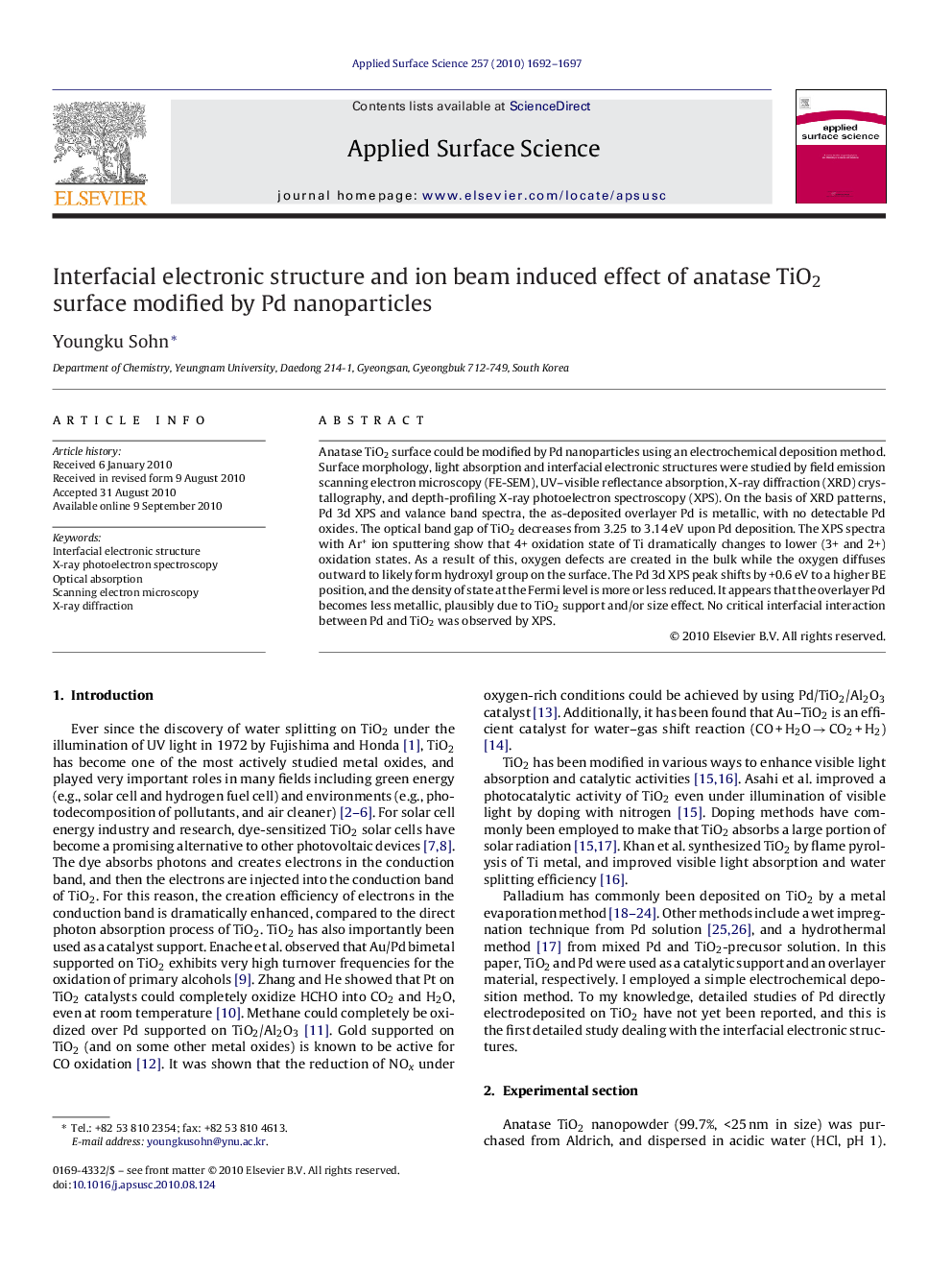| Article ID | Journal | Published Year | Pages | File Type |
|---|---|---|---|---|
| 5359530 | Applied Surface Science | 2010 | 6 Pages |
Abstract
Anatase TiO2 surface could be modified by Pd nanoparticles using an electrochemical deposition method. Surface morphology, light absorption and interfacial electronic structures were studied by field emission scanning electron microscopy (FE-SEM), UV-visible reflectance absorption, X-ray diffraction (XRD) crystallography, and depth-profiling X-ray photoelectron spectroscopy (XPS). On the basis of XRD patterns, Pd 3d XPS and valance band spectra, the as-deposited overlayer Pd is metallic, with no detectable Pd oxides. The optical band gap of TiO2 decreases from 3.25 to 3.14Â eV upon Pd deposition. The XPS spectra with Ar+ ion sputtering show that 4+ oxidation state of Ti dramatically changes to lower (3+ and 2+) oxidation states. As a result of this, oxygen defects are created in the bulk while the oxygen diffuses outward to likely form hydroxyl group on the surface. The Pd 3d XPS peak shifts by +0.6Â eV to a higher BE position, and the density of state at the Fermi level is more or less reduced. It appears that the overlayer Pd becomes less metallic, plausibly due to TiO2 support and/or size effect. No critical interfacial interaction between Pd and TiO2 was observed by XPS.
Keywords
Related Topics
Physical Sciences and Engineering
Chemistry
Physical and Theoretical Chemistry
Authors
Youngku Sohn,
